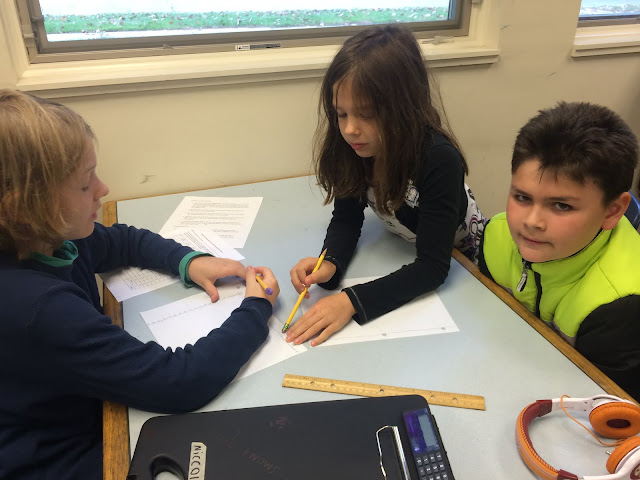Our reading of Napoleon Chagnon’s writing on the Yanomamo continued to inspire spirited conversation this week, as we learned more details about their customs and beliefs. As we discussed aspects that we disagreed with, or found uncomfortable (gender roles, for example, are much more strict and immutable than in our own culture), we began exploring toward the question “what is the function of a culture?” This line of inquiry dovetails with our examination of the purposes of stories and myths in different cultures. To this end, we also took a closer look at a more commonly known myth: The story of Demeter, Persephone, and the changing of the seasons. We also read one of the Grimm fairy tales, called The Seven Ravens. It’s not one of the well known ones, and it has some peculiar twists.
 |
| This is the result of a "chalk talk," during which a question is posed, and then people silently respond on the board. Conversations develop, ideas are floated, grievances are aired. |
A landmark moment occurred on Thursday, when I handed each student a folder full of all of the writing that I’ve been collecting from them from the first eight weeks of school. They spend some time rereading what they’ve produced, and selected items that they were proud of, things that they thought were funny, and pieces that they’d like to either continue, or begin a second draft of.
In our math group, we spent Tuesday practicing the strategy of looking for patterns to solve problems, Thursday was devoted to math games, and Friday found us back at work in our Singapore books.





















